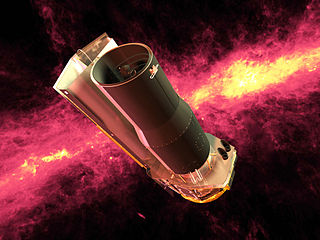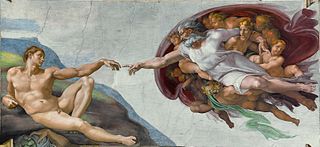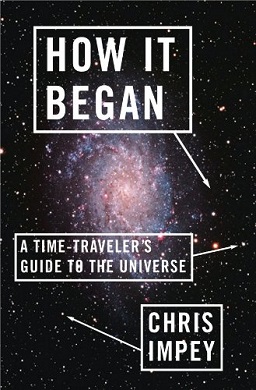Career
After leaving Columbia, Jastrow became an assistant professor at Yale, and then joined the Naval Research Laboratory. In 1958, he joined the newly formed National Aeronautics and Space Administration as head of its theoretical division. [1] In 1961, he became the founding director of NASA's Goddard Institute for Space Studies and served as its director until his retirement from NASA in 1981. Concurrently, he was a professor of Geophysics at Columbia University. [1]
Jastrow was the first chairman of NASA’s Lunar Exploration Committee, which established the scientific goals for the exploration of the Moon during the Apollo lunar landings. [2]
Jastrow was a public figure, prolific author and commentator on a range of topics including the space program, astronomy, earth science, and national security issues. He lectured on CBS and NBC, and his book, Red Giants and White Dwarfs: The Evolution of Stars. was a bestseller [1]
In 1981, Jastrow left NASA to join the faculty of Dartmouth College as professor of Earth Sciences. He left Dartmouth in 1992 to take up duties as director and chairman of the Mount Wilson Institute, managing the Mount Wilson Observatory in California. [2] Jastrow was a member of the NASA Alumni Association. In 1984, Jastrow, together with Fred Seitz and William Nierenberg, founded the George C. Marshall Institute, an organization that assessed scientific issues affecting public policy in Washington, DC. [3] The institute supported U. S. President Ronald Reagan's Strategic Defense Initiative ("Star Wars"), for example in Jastrow's 1985 "How to Make Nuclear Weapons Obsolete". He also became a prominent climate change denier. The George C. Marshall Institute opposed the scientific consensus on anthropogenic global warming. [4] Jastrow acknowledged that Earth was experiencing a warming trend but claimed that the cause was likely to be natural variation. [5] Jastrow served as Chairman Emeritus of the George C. Marshall Institute until his death.
Religious views
His expressed views on creation were that although he was an "agnostic, and not a believer", [6] it seems to him that "the curtain drawn over the mystery of creation will never be raised by human efforts, at least in the foreseeable future" [6] due to "the circumstances of the Big Bang-the fiery holocaust that destroyed the record of the past". [6] With the discovery of the Big Bang, Jastrow began to hold a belief that, if there was a beginning to the universe, there was also a Creator.
In an interview with Christianity Today, Jastrow said "Astronomers now find they have painted themselves into a corner because they have proven, by their own methods, that the world began abruptly in an act of creation to which you can trace the seeds of every star, every planet, every living thing in this cosmos and on the earth. And they have found that all this happened as a product of forces they cannot hope to discover. That there are what I or anyone would call supernatural forces at work is now, I think, a scientifically proven fact." [7]
In his book, God and The Astronomers he illustrated his position as: “For the scientist who has lived by his faith in the power of reason, the story ends like a bad dream. He has scaled the mountains of ignorance, he is about to conquer the highest peak; as he pulls himself over the final rock, he is greeted by a band of theologians who have been sitting there for centuries.” [8]
In a 1995 panel discussion on the PBS show, Think Tank with Ben Wattenberg , Jastrow summed up his position on the apparent conflict between science and religion by saying [9]
"It seems to me that underlying our discussion has been the key issue whether there is an overlap between the domains of science and theology. And my colleagues and I differ in some degree on that. I believe there is no overlap and these are dichotomous, completely different domains of thought."

A constellation is an area on the celestial sphere in which a group of visible stars forms a perceived pattern or outline, typically representing an animal, mythological subject, or inanimate object.

The Spitzer Space Telescope, formerly the Space Infrared Telescope Facility (SIRTF), is an infrared space telescope launched in 2003, that was deactivated when operations ended on 30 January 2020. Spitzer was the third space telescope dedicated to infrared astronomy, following IRAS (1983) and ISO (1995–1998). It was the first spacecraft to use an Earth-trailing orbit, later used by the Kepler planet-finder.

Grote Reber was an American pioneer of radio astronomy, which combined his interests in amateur radio and amateur astronomy. He was instrumental in investigating and extending Karl Jansky's pioneering work and conducted the first sky survey in the radio frequencies.
The discovery of cosmic microwave background radiation constitutes a major development in modern physical cosmology. In 1964, US physicist Arno Allan Penzias and radio-astronomer Robert Woodrow Wilson discovered the cosmic microwave background (CMB), estimating its temperature as 3.5 K, as they experimented with the Holmdel Horn Antenna. The new measurements were accepted as important evidence for a hot early Universe and as evidence against the rival steady state theory as theoretical work around 1950 showed the need for a CMB for consistency with the simplest relativistic universe models. In 1978, Penzias and Wilson were awarded the Nobel Prize for Physics for their joint measurement. There had been a prior measurement of the cosmic background radiation (CMB) by Andrew McKellar in 1941 at an effective temperature of 2.3 K using CN stellar absorption lines observed by W. S. Adams. Although no reference to the CMB is made by McKellar, it was not until much later after the Penzias and Wilson measurements that the significance of this measurement was understood.

Philip Cary Plait, also known as The Bad Astronomer, is an American astronomer, skeptic, and popular science blogger. Plait has worked as part of the Hubble Space Telescope team, images and spectra of astronomical objects, as well as engaging in public outreach advocacy for NASA missions. He has written three books, Bad Astronomy, Death from the Skies, and Under Alien Skies. He has also appeared in several science documentaries, including How the Universe Works on the Discovery Channel. From August 2008 through 2009, he served as president of the James Randi Educational Foundation. Additionally, he wrote and hosted episodes of Crash Course Astronomy, which aired its last episode in 2016.

Progressive creationism is the religious belief that God created new forms of life gradually over a period of hundreds of millions of years. As a form of old Earth creationism, it accepts mainstream geological and cosmological estimates for the age of the Earth, some tenets of biology such as microevolution as well as archaeology to make its case. In this view creation occurred in rapid bursts in which all "kinds" of plants and animals appear in stages lasting millions of years. The bursts are followed by periods of stasis or equilibrium to accommodate new arrivals. These bursts represent instances of God creating new types of organisms by divine intervention. As viewed from the archaeological record, progressive creationism holds that "species do not gradually appear by the steady transformation of its ancestors; [but] appear all at once and "fully formed."

The George C. Marshall Institute (GMI) was a nonprofit conservative think tank in the United States. It was established in 1984 with a focus on science and public policy issues and had an initial focus in defense policy. Starting in the late 1980s, the institute advocated for views in line with environmental skepticism, most notably climate change denial. The think tank received extensive financial support from the fossil fuel industry.

The Goddard Institute for Space Studies (GISS) is a laboratory in the Earth Sciences Division of NASA's Goddard Space Flight Center affiliated with the Columbia University Earth Institute. The institute is located at Columbia University in New York City. It was named after Robert H. Goddard, American engineer, professor, physicist and inventor who is credited with creating and building the world's first liquid-fueled rocket.

Gavin A. Schmidt is a British climatologist, climate modeler and Director of the NASA Goddard Institute for Space Studies (GISS) in New York, and co-founder of the climate science blog RealClimate.

Richard A. Muller is an American physicist and emeritus professor of physics at the University of California, Berkeley. He was also a faculty senior scientist at the Lawrence Berkeley National Laboratory. In early 2010, Muller and his daughter Elizabeth Muller founded the group Berkeley Earth, an independent 501(c)(3) non-profit aimed at addressing some of the major concerns of the climate change skeptics, in particular the global surface temperature record. In 2016, Richard and Elizabeth Muller co-founded Deep Isolation, a private company seeking to dispose of nuclear waste in deep boreholes.

Cosmology is a branch of physics and metaphysics dealing with the nature of the universe, the cosmos. The term cosmology was first used in English in 1656 in Thomas Blount's Glossographia, and in 1731 taken up in Latin by German philosopher Christian Wolff, in Cosmologia Generalis. Religious or mythological cosmology is a body of beliefs based on mythological, religious, and esoteric literature and traditions of creation myths and eschatology. In the science of astronomy, cosmology is concerned with the study of the chronology of the universe.

Marcelo Gleiser is a Brazilian physicist and astronomer. He is a professor of physics and astronomy at Dartmouth College.
This is a timeline of astronomy. It covers ancient, medieval, Renaissance-era, and finally modern astronomy.

George Saliba is an American historian who is Professor of Arabic and Islamic Science at the Department of Middle Eastern, South Asian, and African Studies, Columbia University, New York, where he has been since 1979. Saliba is currently the founding director of the Farouk Jabre Center for Arabic & Islamic Science & Philosophy and the Jabre-Khwarizmi Chair in the History Department.
Eric J. Chaisson is an American astrophysicist known for his research, teaching, and writing on the interdisciplinary science of cosmic evolution. He is a member of the Center for Astrophysics | Harvard & Smithsonian, teaches natural science at Harvard University and is an elected Fellow of the American Association for the Advancement of Science.

Sten Felix Odenwald is an American astronomer, author, and NASA scientist-educator. Odenwald has worked as part of the NASA Cosmic Background Explorer, Diffuse Infrared Background Experiment investigating the cosmic infrared background. He has published four books: The Astronomy Cafe, The 23rd Cycle, Patterns in the Void and Back to the Astronomy Cafe. He has also appeared in a number of TV and radio documentaries on astronomy and space weather. Since receiving his Ph.D. in astronomy from Harvard University in 1982, he has been an astronomer in the Washington, D.C. area, primarily at NASA's Goddard Spaceflight Center in Greenbelt, Maryland. Since 2000, he has been actively involved in science and math education at NASA, and was a founding member of the Sun-Earth Connection Education Forum, among many other high-visibility NASA education projects involving space weather issues, archeoastronomy and the transits of Venus in 2004 and 2012. He is currently the director of STEM Education at the National Institute of Aerospace.

David Morrison is an American astronomer, a senior scientist at the Solar System Exploration Research Virtual Institute, at NASA Ames Research Center in Mountain View, California. Morrison is the former director of the Carl Sagan Center for Study of Life in the Universe at the SETI Institute and of the NASA Lunar Science Institute. He is the past Director of Space at NASA Ames. Morrison is credited as a founder of the multi-disciplinary field of astrobiology. Morrison is best known for his work in risk assessment of near Earth objects such as asteroids and comets. Asteroid 2410 Morrison was named in his honor. Morrison is also known for his "Ask an Astrobiologist" series on NASA's website where he provides answers to questions submitted by the public. He has published 12 books and over 150 papers primarily on planetary science, astrobiology and near Earth objects.
Adam Frank is an American physicist, astronomer, and writer. His scientific research has focused on computational astrophysics with an emphasis on star formation and late stages of stellar evolution. His work includes studies of exoplanet atmospheres and astrobiology. The latter include studies of the generic response of planets to the evolution of energy-intensive civilizations (exo-civilizations).

How It Began: A Time Traveler's Guide to the Universe is a non-fiction book by the astronomer Chris Impey that discusses the history of the universe, with chapters ranging from the proximate universe to within an iota of the Big Bang. It was published as a hardcover by W. W. Norton & Company in 2012 and as a paperback in 2013. It is actually the prequel to his 2010 book How it Ends: From You to the Universe, which talks about how everything, from individual humans, to the human species, to the Earth, and finally, the universe, might one day end in the future.
Bradford A. Smith was an American astronomer and an associate of the International Astronomical Union. He was employed by the Voyager program, and discovered the moon Bianca on January 23, 1986.














